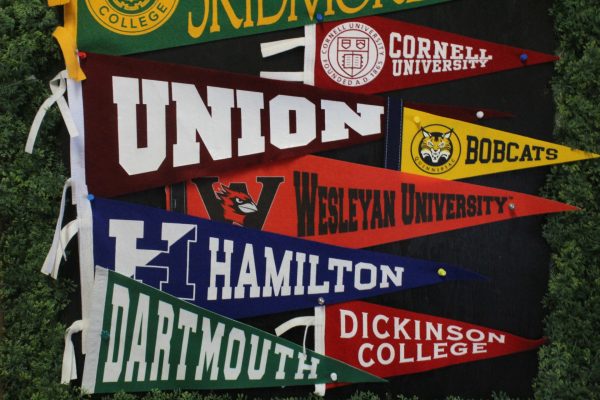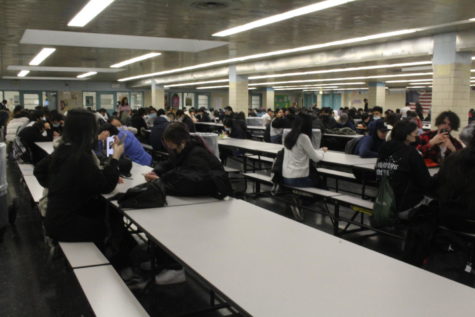Enough is Enough: We Need To Ban Assault Rifles
In recent years, mass shootings have been an alarmingly increasing trend across the country, destroying families and inflicting devastation on communities. Schools are becoming the scene of horrifying violence and all-out battlefields. In order to protect our students, it is crucial that we take on this issue and take action now. The terrible effects of gun violence have long been a problem in the United States and it’s clear that some weapons represent a particular risk to public safety. Assault weapons stand out among these, due to their enormous firepower and potential for mass destruction when in the wrong hands and used for the wrong reasons. There are heated debates and opinions for both pro and anti-assault rifles that argue the right to bear arms is a core American value granted by the Second Amendment. However, this concept shouldn’t be at the expense of the lives of children and innocent people. For the sake of our students, children’s safety, and well-being, it is critical that we as a society act now before things get out of hand.
Alarmingly, assault guns have the capacity to quickly cause mass casualties within a short span of time. They are the weapon of preference for mass shooters due to their rapid rate of fire and big magazine capacity. Numerous horrific incidents, such as the Las Vegas Massacre in 2017 and the killing at Sandy Hook Elementary School in 2012, serve as reminders of the destruction these weapons can inflict. In certain claims to assault rifles, they are primarily used in military and law enforcement operations. These guns are not needed for hunting or self-defense purposes; rather, these tasks can be successfully completed with a broad variety of other firearms. They are specially made to increase lethality on the battlefield, enabling soldiers to effectively fulfill their duties or objectives. We can make a clear compromise that protects the rights of responsible gun owners while eliminating unneeded firepower from civilian hands by outlawing assault weapons. Assault rifles are unnecessary for the typical person since other weapons not intended for mass devastation can be used for self-defense and other means. If we limit access to assault weapons, it won’t violate law-abiding people’s right to bear guns; rather, it would take a pointless and dangerous weapon out of their hands. In addition, the effectiveness of background checks is a crucial element of responsible gun ownership and is an area to examine. It is depressing and heartbreaking to learn that despite these precautions, people with a history of violence or mental illnesses are still able to openly obtain weapons because of loopholes in the law or gaps in the system. To guarantee a comprehensive screening process and prevent those who represent a risk to society and themselves from obtaining weapons, our country must prioritize enhancing and extending background checks.
Furthermore, on September 13, 1994, as part of a comprehensive crime measure, the Assault Weapons Ban, came into effect, signed by Bill Clinton. The manufacturing, transfer, and ownership of a few semi-automatic rifles that were designated as assault weapons were prohibited by this legislation. The sale of high-capacity magazines that could store more than 10 rounds of ammunition was also forbidden under the prohibition. The biggest of the bill’s flaws was that it only applied to certain kinds of weapons and large-capacity magazines that were produced after it was signed into law; therefore, it was legal to possess or sell such a weapon or magazine if it had been produced earlier. Mass shooting fatalities decreased while the annual number of occurrences increased slowly in the years following the implementation of the assault weapons ban. Even accounting for the Columbine High School tragedy in 1999, which was the bloodiest mass shooting during the ban’s application, there were fewer mass shootings and deaths as a result of such incidents from 1994 to 2004 than there had been prior to the ban’s introduction. The data reveals a very instantaneous and sharp increase in the number of mass shooting fatalities in the years following the assault weapons ban’s repeal in 2004. Between 2004 and 2017 – the final year of our data – there were an average of 25 deaths per year that were related to mass shootings, as opposed to 5.3 during the ban’s initial ten years and 7.2 in the years before assault weapons were outlawed. According to their calculations, the chance of dying in a mass shooting in the United States was 70% lower while the assault weapons ban was in effect. There were nine fewer fatalities attributable to mass shootings per 10,000 gun homicides, which represents a decrease in the rate of gun homicides overall. The data and statistics conducted by numerous professionals and sources show a clear increase after the ban expired and a decrease in mass shootings when the ban was in effect.
As mentioned before, mass shootings have been more recently involved in school environments, ranging from elementary schools to college campuses or universities to public attractions or places where many obtain daily necessities. Many of the shooters were either former students or those with mental illnesses that had a clear objective or moral, or did it to result in the most casualties possible. After distributing a Winnie the Pooh-themed book to elementary school pupils that teaches kids how to “run, hide, and fight” in perilous situations like a mass shooting, a Dallas school district has come under fire from parents. The fact that this exists is absurd. Kids starting to attend school now have to worry about the dangers of school shootings instead of enjoying their life. When Cindy Campos’ youngest son, a pre-kindergartener, brought the book “Stay Safe” home from school last week, she wasn’t sure what to do, according to Cindy Campos, whose two kids go to an elementary school in the Dallas Independent School District. Ms. Campos claimed that at first, she questioned whether it was a present from her son’s instructor. But later that evening, she discovered the same book in the first-graders backpack of her oldest son. She claimed that at that point, she began to wonder if the book was a project of the local education system. Other parents voiced their displeasure as well, questioning why the book was distributed without instruction and labeling the act “tone deaf” for taking place so soon after the anniversary of the Uvalde, Texas, elementary school tragedy, which claimed the lives of 19 pupils and two teachers. Young children should enjoy their time in lower education without having to worry about or fear a threat in the classroom. What kind of memories will children remember?
On the other hand, the idea of assault weapons being banned is seen as a bad idea due to much information found. According to Institute for Youth in Policy, it states “When it comes to mass shootings, according to Statistica, of the 228 individual weapons utilized over the course of 168 reported incidents since 1985, only 55 weapons were of the rifle distinction, less than a quarter. Handguns accounted for nearly two-thirds of the weapons used in these incidents. This shows that rifles and other assault weapons are not in fact the leading class of weapons used in single or mass shootings. In addition, according to FEE Stories, it states “There is also little evidence that these weapons bans have worked in the past. From 1994 to 2004, Congress banned the manufacture, sale, or transfer of a large number of “assault weapons” (including some handguns and high-capacity magazines). An assessment study commissioned by the Department of Justice in 2004 found no evidence that the ban had had any effect on gun violence and concluded that “should it be renewed, the ban’s effects on gun violence are likely to be small at best and perhaps too small for reliable measurement.” Overall though according to American Progress.org “A 2019 study examined mass shootings from 1981 through 2017 and analyzed the risk of fatalities in those incidents. The study found that during the 10-year period the federal ban was in effect, mass shooting fatalities were 70 percent less likely to occur than either before or after the ban.”
All in all, the banning of assault weapons in the United States would be more beneficial to schools and children bringing safety to an all time high. Schools should be a place where students feel the most safe. Instead, their lives are being threatened with assault weapons and this should not be the case.







